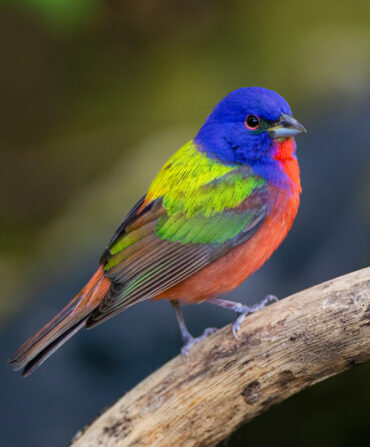On a dewy summer morning in West Texas, I gaze over a table outfitted with Q-tips, pliers, calipers, and scales. A black-chinned hummingbird, retrieved from a nearby trap, lies swaddled in a nylon stocking toe, ready to be aged, weighed, measured, and adorned with an aluminum leg band the size of a chia seed.

Given hummingbirds’ size and relative fragility, banding them requires special skills gained from extensive training, along with an acute understanding of their anatomy and behavior—little wonder only around 150 master hummingbird banders exist in the United States. “It’s like a club, but a very small club,” says Charles Floyd, today’s bander, who primarily works out of the Hummer House, an observation spot here in Christoval.
Like many of his fellow volunteers, Floyd has no formal ornithology background but is a lifelong naturalist with a passion for birds; he recalls climbing trees and peeping over bluebird nests as a child in the Panhandle. After retiring from a career in education, he pursued his master permit and has since banded thousands of hummingbirds to help gather insight into their behavior, distribution, longevity, and site fidelity. “Without knowledge of what’s happening year after year through a huge dataset,” he explains, “we can’t identify patterns, and we don’t know what hummingbirds need.”
The U.S. Geological Survey’s Bird Banding Laboratory, at the Eastern Ecological Science Center in Laurel, Maryland, collates the data the banders collect from some thirty thousand hummingbirds each year. Thanks to the group’s work, seventeen hummingbird species have been banded nationwide. More than half of those—including the commonly seen ruby-throated hummer—spend time in the South, relying on native plants both for nectar and for providing habitat for the insects that make up a vital part of their diets.
What starts as an anomaly—a single stray data point from a caught bird—can spark a discovery. Retired air force pilot and bander Fred Bassett caught Anna’s and broad-billed hummingbirds in Alabama and Florida, revealing that these Western species often winter in Gulf Coast states instead of flying south to the tropics. Floyd’s data corroborates this information—he identified Anna’s and another Western species, the Allen’s hummingbird, in the Davis Mountains of West Texas. Just last year, Bassett banded a rare Mexican violet-ear on Lake Eufaula, bordering Alabama and Georgia. “It’s indescribable to catch a bird that you absolutely do not expect,” he says. “The thing about hummingbirds is, the more you study them, the more you realize we don’t know very much.”
Recapturing banded birds is the best way to glean new insights. “We are getting close to a thousand recaptures a year,” says Antonio Celis-Murillo, the Bird Banding Lab’s chief, “so it’s really telling us a lot.” In Texas, Floyd once captured a black-chinned hummingbird banded eleven years earlier; Bassett has logged a thirteen-year-old—just two of the many data points that revealed to biologists that hummingbirds can live far past the previously thought three-to-five-year life span. Recaptures have also shown that migrating hummingbirds exhibit site fidelity—they return to the same place, like the Hummer House, year after year.
“Basically, all the banders are playing a really big game of connect the dots,” explains Kyle Shepard. He and his partner, Emma Rhodes, are among a new generation of birders moving the field forward. The pair co-operate a public banding station in Fort Morgan, Alabama, and are working on a technological upgrade: using ultralight solar tracking devices, originally developed for monarch butterflies, on hummingbirds. For now, though, the tiny aluminum bands are researchers’ best hope for piecing together the secret lives of these enigmatic migrants and learning how best to protect their many habitats.
Back at the banding station in Christoval, Floyd motions me over and places the newly banded black-chinned in my outstretched palm. I catch my breath as its amethyst throat sparkles in the light, like a bejeweled necklace. For a moment, the bird rests there, warm and calm, heartbeat to heartbeat, before zooming off toward the rising sun.








